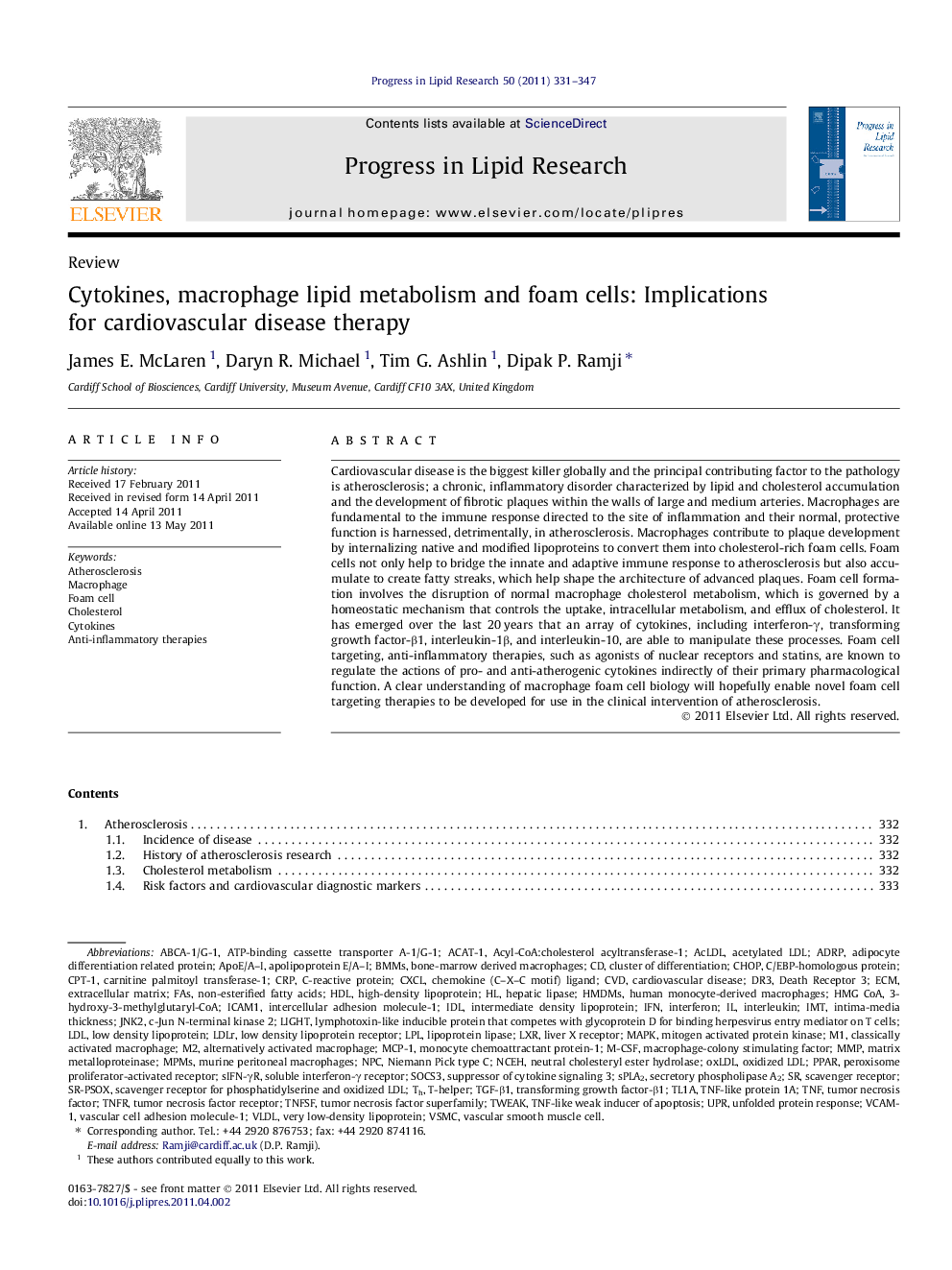| Article ID | Journal | Published Year | Pages | File Type |
|---|---|---|---|---|
| 2019158 | Progress in Lipid Research | 2011 | 17 Pages |
Abstract
Cardiovascular disease is the biggest killer globally and the principal contributing factor to the pathology is atherosclerosis; a chronic, inflammatory disorder characterized by lipid and cholesterol accumulation and the development of fibrotic plaques within the walls of large and medium arteries. Macrophages are fundamental to the immune response directed to the site of inflammation and their normal, protective function is harnessed, detrimentally, in atherosclerosis. Macrophages contribute to plaque development by internalizing native and modified lipoproteins to convert them into cholesterol-rich foam cells. Foam cells not only help to bridge the innate and adaptive immune response to atherosclerosis but also accumulate to create fatty streaks, which help shape the architecture of advanced plaques. Foam cell formation involves the disruption of normal macrophage cholesterol metabolism, which is governed by a homeostatic mechanism that controls the uptake, intracellular metabolism, and efflux of cholesterol. It has emerged over the last 20 years that an array of cytokines, including interferon-γ, transforming growth factor-β1, interleukin-1β, and interleukin-10, are able to manipulate these processes. Foam cell targeting, anti-inflammatory therapies, such as agonists of nuclear receptors and statins, are known to regulate the actions of pro- and anti-atherogenic cytokines indirectly of their primary pharmacological function. A clear understanding of macrophage foam cell biology will hopefully enable novel foam cell targeting therapies to be developed for use in the clinical intervention of atherosclerosis.
Keywords
ECMAcLDLMMPTGF-β1HDLFASMCP-1LDLRPPARIMTUPRICAM1NPCADRPVSMCsPLA2T-helperCXCLVCAM-1SOCS3LPLM-CSFTNFRVLDLLXRTWEAKCPT-1TNF-like weak inducer of apoptosisHMG CoAJnk2oxLDLIDLAcyl-CoA:cholesterol acyltransferase-1TL1ADR3chemokine (C–X–C motif) ligandMPMsTNFSFNiemann Pick type CACAT-1TNFHMDMsnCEHadipocyte differentiation related protein3-Hydroxy-3-methylglutaryl-CoABMMsC/EBP-homologous proteinhigh-density lipoproteinAcetylated LDLOxidized LDLMAPKAtherosclerosisSecretory phospholipase A2non-esterified fatty acidsinterferonIFNinterleukincardiovascular diseaseTransforming growth factor-β1CHOPcluster of differentiationCVDsuppressor of cytokine signaling 3Vascular smooth muscle cellFoam cellCytokinesIntima-media thicknesstumor necrosis factorTumor necrosis factor superfamilyhepatic lipaseLipoprotein lipasevery low-density lipoproteinIntermediate density lipoproteinlow density lipoproteinLDLExtracellular matrixmatrix metalloproteinaseMacrophagemacrophage-colony stimulating factoralternatively activated macrophageBone-Marrow Derived Macrophagesclassically activated macrophagehuman monocyte-derived macrophagesMurine peritoneal macrophagesintercellular adhesion molecule-1vascular cell adhesion molecule-1lightNeutral cholesteryl ester hydrolaseUnfolded protein responsemonocyte chemoattractant protein-1C-reactive proteinCRPmitogen activated protein kinasecarnitine palmitoyl transferase-1liver X receptorcholesteroltumor necrosis factor receptorperoxisome proliferator-activated receptorlow density lipoprotein receptorScavenger receptordeath receptor 3
Related Topics
Life Sciences
Agricultural and Biological Sciences
Food Science
Authors
James E. McLaren, Daryn R. Michael, Tim G. Ashlin, Dipak P. Ramji,
